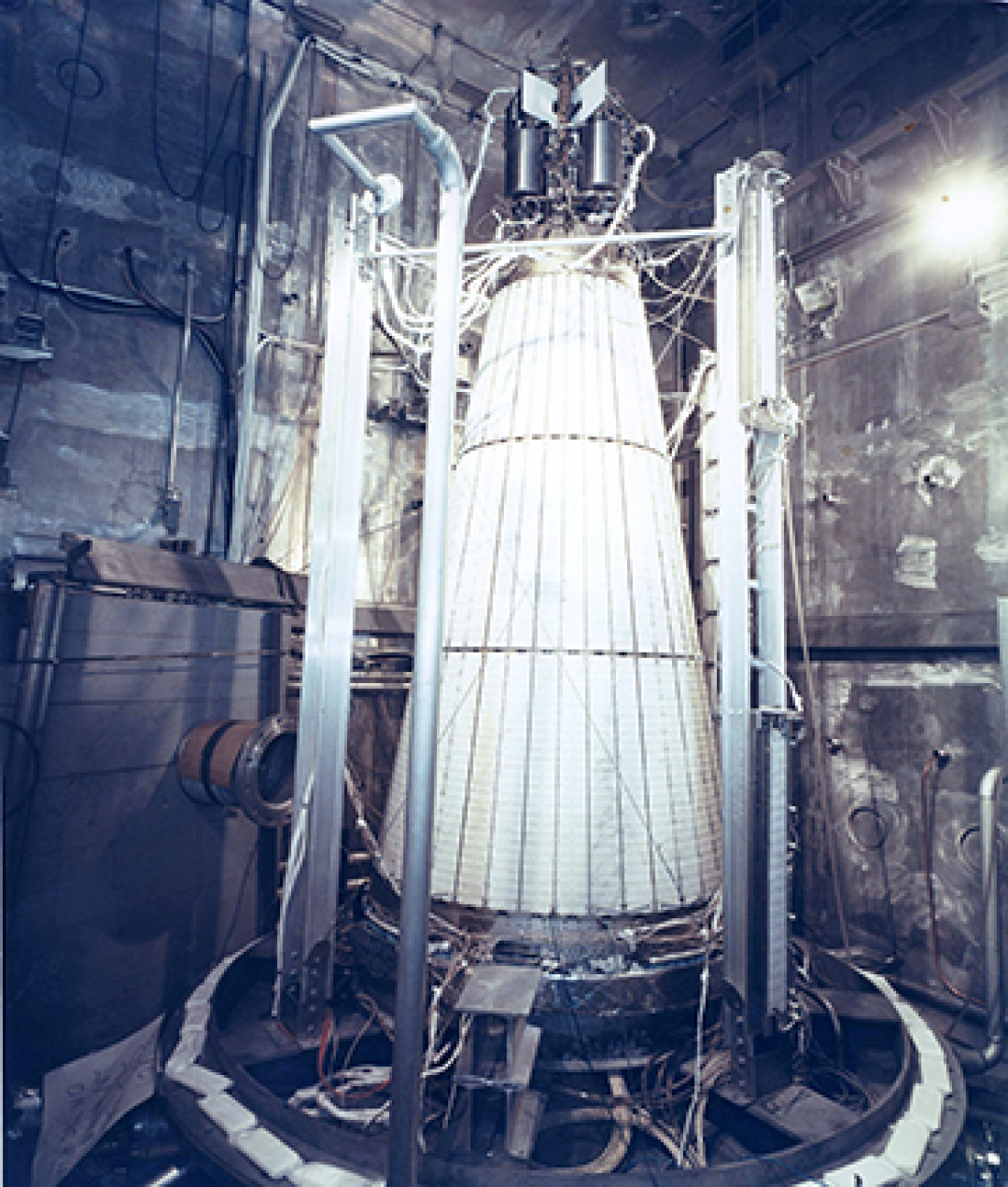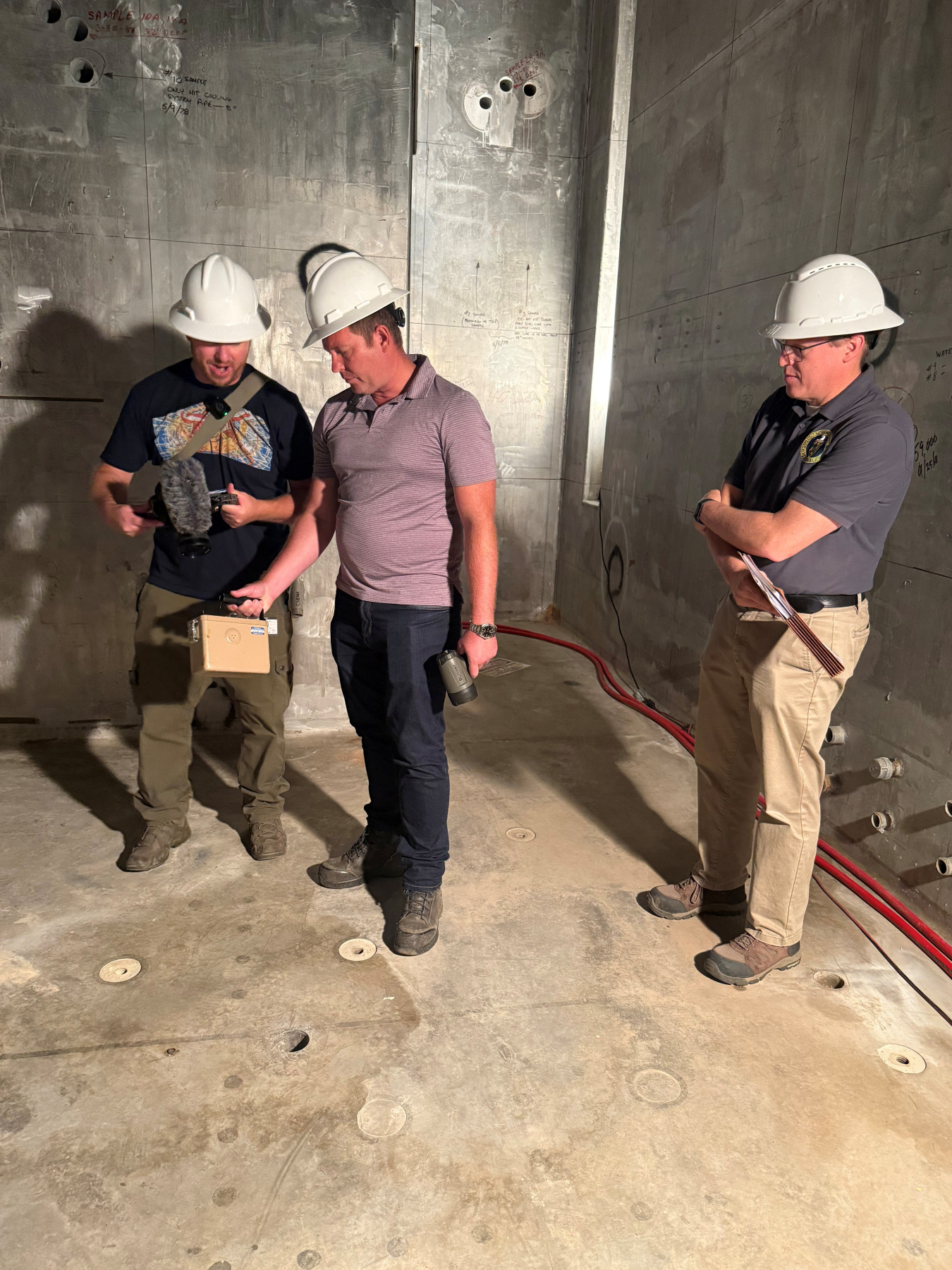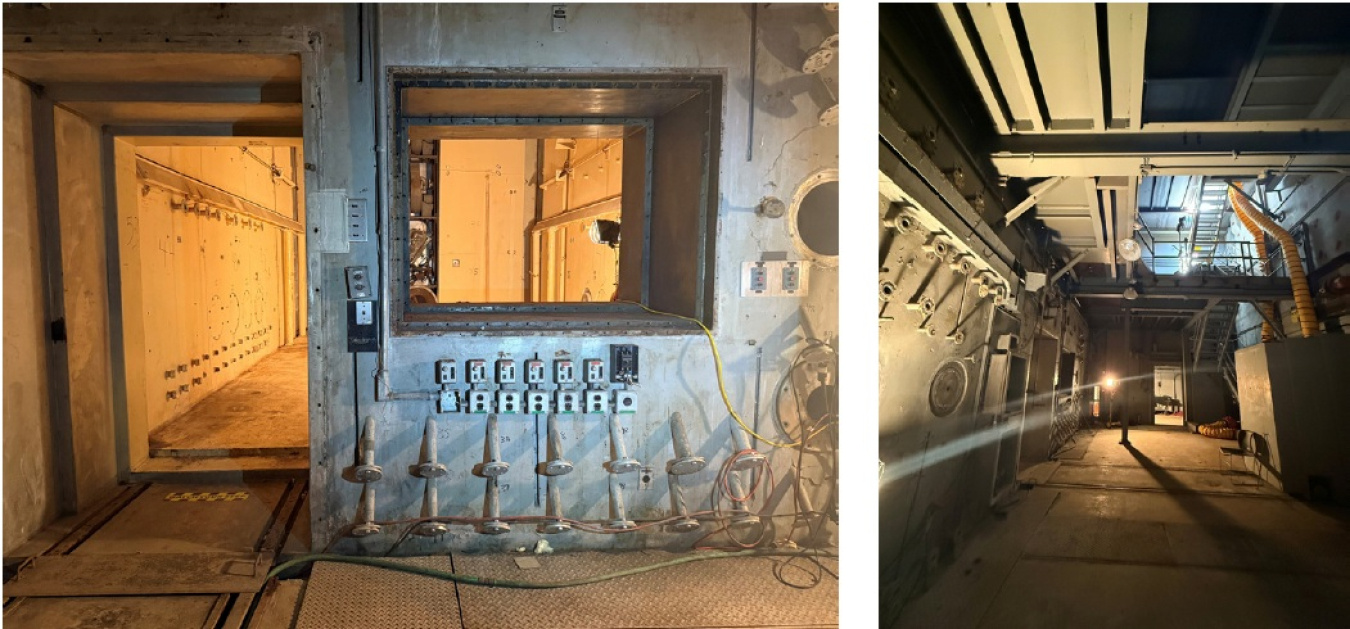Learn about the history of the System for Nuclear Auxiliary Program (SNAP) that helped lay groundwork for today's space powers systems and brought social media influencer Andrew Walker to SSFL in July
Energy Technology Engineering Center
September 11, 2025
The Santa Susana Field Laboratory (SSFL) is well-known for being a former rocket engine testing and nuclear research facility.
While all of the above-ground buildings belonging to the Department of Energy (DOE) no longer remain, there is still evidence of nuclear reactor research and development that once took place at the site.
DOE formerly operated the Energy Technology Engineering Center (ETEC), located in Area IV of the 2,850-acre SSFL.
Roughly 30 feet below ground, the basement of Building 4024 holds remnants of the chambers used to test nuclear reactors as part of the System for Nuclear Auxiliary Power (SNAP) program, which began in 1955 in response to the need for innovative power sources for space exploration.
It was the legacy of SNAP that brought social media influencer Andrew Walker back to SSFL in July to film footage for his social media channel.
During his first visit in October 2024, Walker interviewed Dr. Joshua Mengers, DOE’s federal project director for SSFL, about the site’s history, took readings of radioactivity, and discussed the Sodium Reactor Experiment.

The SNAP program was a joint effort led by the Atomic Energy Commission, the U.S. Air Force and NASA to develop compact, lightweight and reliable atomic electric devices—reactors—for use in space and sea and on land.
Tests for these reactors were held primarily within six buildings at ETEC between 1956 and 1971, including the SNAP Environmental Test Facility (SETF), also known as Building 24 or 4024.
The SETF had large vacuum chambers that replicated the near-zero pressure of space and were equipped with thermal shrouds and radiant heaters to simulate thermal extremes encountered in orbit. This allowed for system-level testing of three fully assembled SNAP reactor prototypes, including SNAP-10.
SNAP-10A was launched April 3, 1965, aboard an Atlas-Agena D rocket from Vandenburg Air Force Base in Lompoc, California, about 140 miles northeast of SSFL. This became the only nuclear reactor the U.S. successfully sent into space.
Once in orbit, SNAP-10A provided power for 43 days before it unexpectedly shut down due to a voltage regulator not related to the reactor. The reactor remains safe, shut down and in a stable 4,000-year orbit.
“The SNAP program laid critical groundwork for future space nuclear power systems that remain foundational in the technology we see today,” Mengers said.
“We are not only proud of SNAP’s legacy but all the historical research and innovation that took place at ETEC, including advances in liquid metals, ocean thermal energy conversion and nuclear power.”

Today, the basement of Building 4024 is one of the last remaining items on the list as DOE continues cleaning up its portion of SSFL.
Remediation at SSFL is part of DOE’s commitment to clean up the environmental legacy of innovative programs, like SNAP, that helped end World War II and win the Cold War.
Read about the SNAP program, watch videos about the nuclear reactors in the ETEC Document Library and view a photo gallery with historical photos.
View photos of the SNAP program
-Contributor: Melissa Simon

